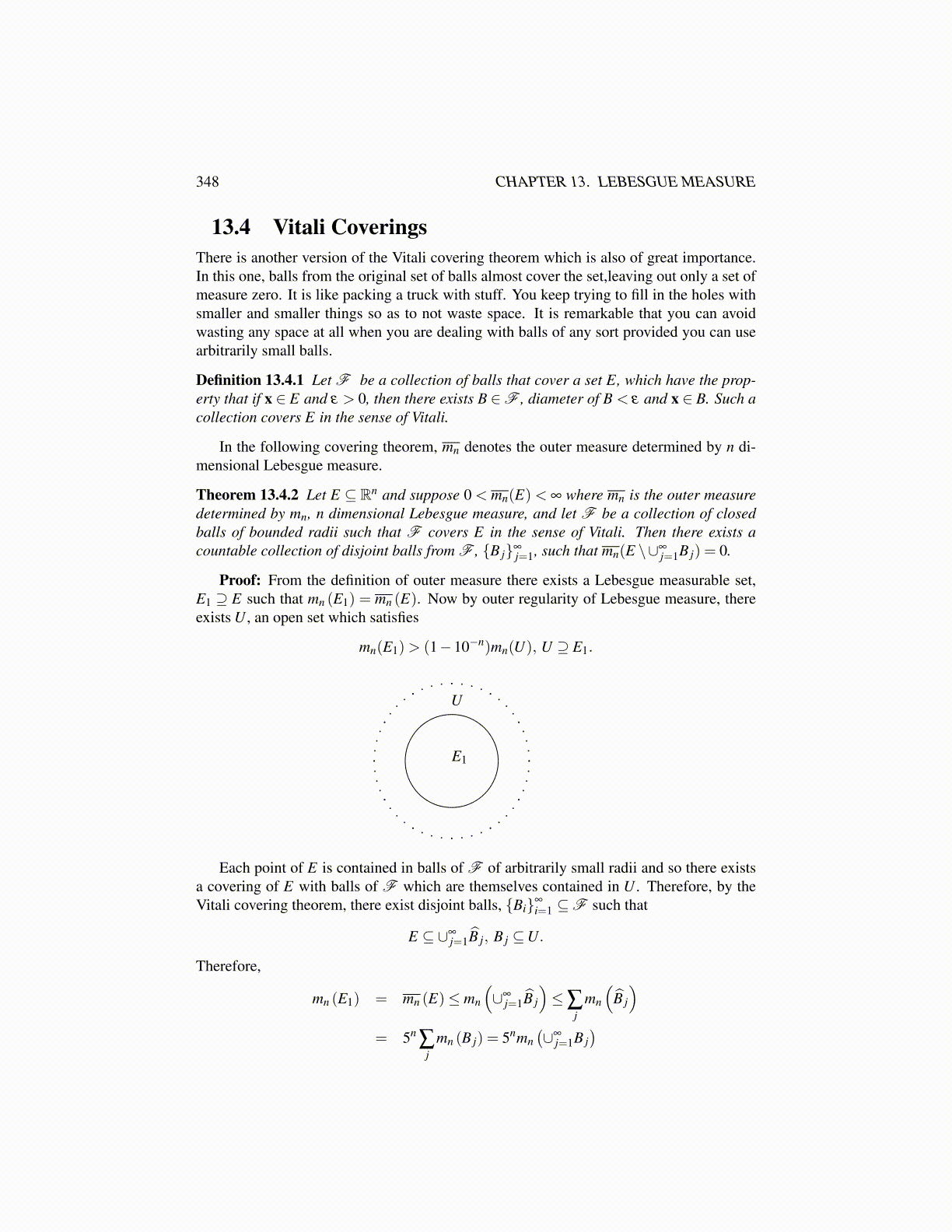
348 CHAPTER 13. LEBESGUE MEASURE
13.4 Vitali CoveringsThere is another version of the Vitali covering theorem which is also of great importance.In this one, balls from the original set of balls almost cover the set,leaving out only a set ofmeasure zero. It is like packing a truck with stuff. You keep trying to fill in the holes withsmaller and smaller things so as to not waste space. It is remarkable that you can avoidwasting any space at all when you are dealing with balls of any sort provided you can usearbitrarily small balls.
Definition 13.4.1 Let F be a collection of balls that cover a set E, which have the prop-erty that if x ∈ E and ε > 0, then there exists B ∈F , diameter of B < ε and x ∈ B. Such acollection covers E in the sense of Vitali.
In the following covering theorem, mn denotes the outer measure determined by n di-mensional Lebesgue measure.
Theorem 13.4.2 Let E ⊆ Rn and suppose 0 < mn(E) < ∞ where mn is the outer measuredetermined by mn, n dimensional Lebesgue measure, and let F be a collection of closedballs of bounded radii such that F covers E in the sense of Vitali. Then there exists acountable collection of disjoint balls from F , {B j}∞
j=1, such that mn(E \∪∞j=1B j) = 0.
Proof: From the definition of outer measure there exists a Lebesgue measurable set,E1 ⊇ E such that mn (E1) = mn (E). Now by outer regularity of Lebesgue measure, thereexists U , an open set which satisfies
mn(E1)> (1−10−n)mn(U), U ⊇ E1.
E1
U
Each point of E is contained in balls of F of arbitrarily small radii and so there existsa covering of E with balls of F which are themselves contained in U . Therefore, by theVitali covering theorem, there exist disjoint balls, {Bi}∞
i=1 ⊆F such that
E ⊆ ∪∞j=1B̂ j, B j ⊆U.
Therefore,
mn (E1) = mn (E)≤ mn
(∪∞
j=1B̂ j
)≤∑
jmn
(B̂ j
)= 5n
∑j
mn (B j) = 5nmn(∪∞
j=1B j)